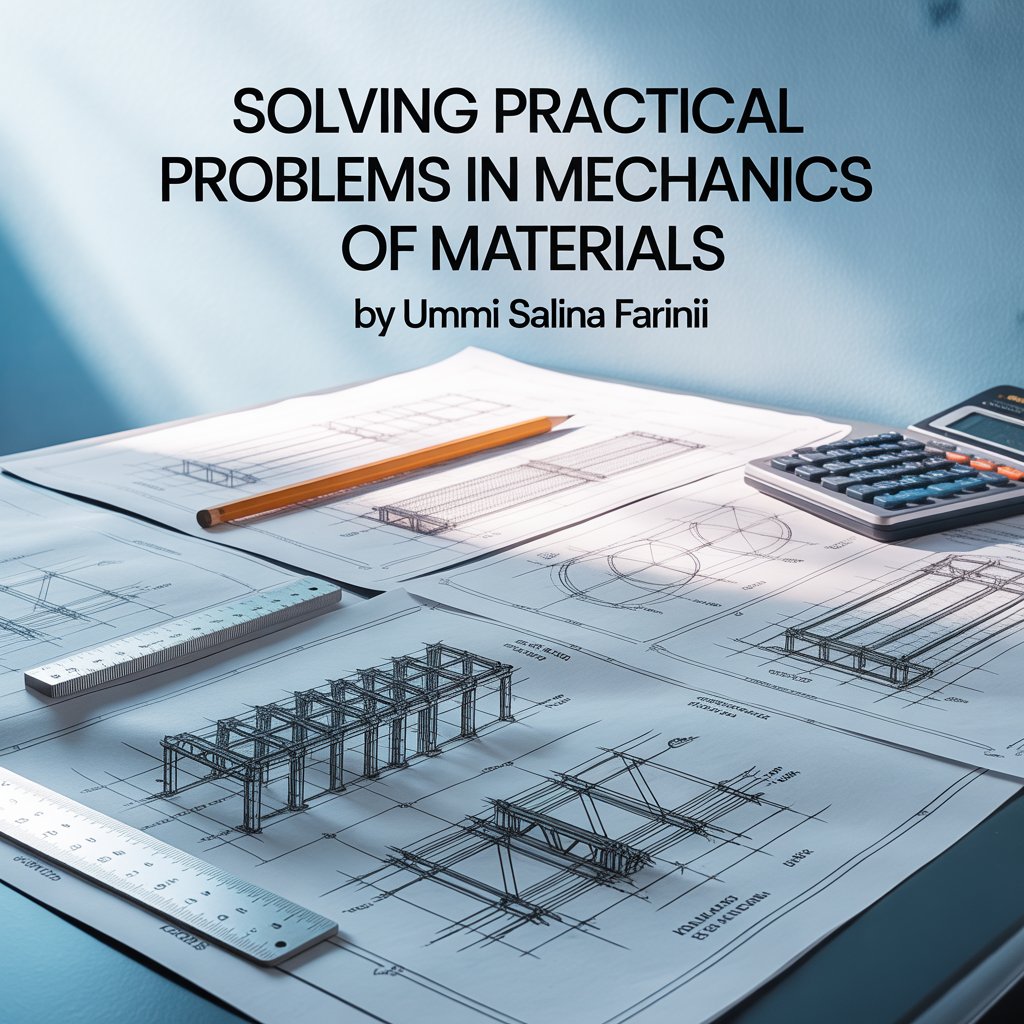
Chapter 2: Concepts of Stress and Strain
.png)
Chapter
2: Concepts of Stress and Strain
In
this chapter, you dive deeper into how forces interact with materials. You
learn about the different types of stress (normal and shear) and strain
(elastic and plastic), and how materials respond to being pushed, pulled, and
twisted. You also explore the relationship between stress and strain, how to
interpret stress-strain diagrams, and why Hooke’s Law is such a handy rule for
predicting material behavior.
- Types of Stress: Normal,
Shear
·
Stress is basically how much force is applied to
a material and how that force spreads over an area. Imagine pressing your
finger on a desk—the harder you press (force) over a small area (your
fingertip), the more stress you create. Normal stress happens when the force
acts perpendicular (straight on) to a surface, like when you hang a weight from
a rope. Shear stress, on the other hand, occurs when the force acts parallel to
a surface—think of cutting paper with scissors; the blades apply shear stress that
slices the paper. In civil engineering, understanding these two types of stress
helps us predict how beams, columns, and other structures will react under
different loads. It also helps prevent failures in design by ensuring materials
are used within their safe limits.
- Types of Strain: Elastic
and Plastic
·
Strain is all about how much a material deforms
when stress is applied. If you pull on a rubber band, it stretches—this
stretching is strain. There are two main types: elastic and plastic. Elastic
strain is reversible, just like a rubber band snapping back once you release
it. Most construction materials, like steel, behave elastically under small
loads. But if you stretch or bend a material too much, it goes into plastic
strain, meaning it changes shape permanently—it won’t go back to its original
form even after you remove the load. Knowing the difference is crucial for
engineers so that they can choose the right material for the job and make sure
structures remain safe under everyday loads.
- Stress-Strain Relationships
·
The relationship between stress and strain helps
us understand how materials will respond to different forces. For most
materials, especially metals, there’s a direct relationship (often shown as a
straight line on a graph) between stress and strain, up to a certain limit.
This linear part is called the elastic region, where the material will return
to its original shape if the load is removed. Beyond this point, the material
will behave differently—moving into the plastic region we've talked about. The
stress-strain relationship is fundamental in selecting materials and designing
safe structures, because it tells us how much we can load a material before it
deforms permanently.
- Stress-Strain Diagrams
·
A stress-strain diagram is a simple but powerful
tool in engineering. It’s a graph that shows how a material stretches (strain)
as you increase the load (stress). The curve usually starts straight,
representing elastic behavior, and then bends, showing the start of plastic
deformation. Important points on this graph include the yield point (where
plastic deformation starts), the ultimate strength (the highest stress the
material can handle), and the fracture point (where the material breaks). By
studying this diagram, engineers can quickly compare materials and predict how
they will behave in real-life applications, ensuring structures don’t fail
unexpectedly.
- Hooke’s Law
·
Hooke’s Law is a simple rule that states: the
strain in a material is directly proportional to the applied stress, as long as
you’re within the elastic limit. Think of it like a spring—double the force,
and you double the stretch (within reason). This law is summarized by the
formula: stress = modulus × strain. In practical terms, Hooke’s Law makes it
easy to calculate how much a beam or column will stretch or compress under a
certain load, which is especially helpful in construction and design work. It
also highlights why using materials within their elastic range is so
important—go past it, and things can get permanently bent or broken!

